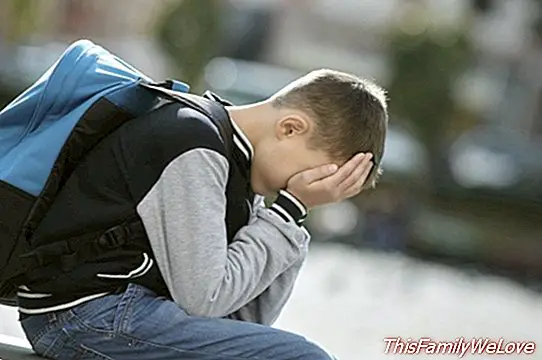Strategies to move forward when you are a victim of bullying

The Bullying or bullying It is a problem of serious incidence today, a phenomenon that concerns the educational community, families, public authorities and society in general. For this reason, different prevention programs are developed in educational centers, mainly aimed at the resolution of conflicts and the development of emotional intelligence, among others; sponsored by different organizations and public authorities.
These programs have demonstrated their effectiveness in those centers where their implementation has been carried out, since numerous studies have proven that work at an early age contributes powerfully in the reduction of violence rates and a significant increase in coexistence among school children. It is in these ages the ideal time to transmit adequate models of behavior and management of emotions, which will greatly help them in the development of their evolutionary stage, both intellectually and behaviorally.
On the other hand, interventions are more difficult in the ages of the secondary stages, since the process of self-discovery and definition of the space in the adolescents themselves complicates the interventions and the resolution of the conflicts that affect them.
Against bullying, learning good behaviors
Effectively, acting in a rigorous and systematic way in primary education cycles facilitates the development of minors and the learning good behaviors, which is reflected in an authentic culture of peace installed in the centers.
These methods have successful results, especially when working with young children values such as empathy and respect for others, internalizing them so surprisingly that they end up using them naturally in their games and relationships with peers.
By internalizing these values so strongly, they will hardly ignore a situation of injustice, much less mistreatment or harassment towards an equal, since they will directly oppose and defend the victim; thus reducing the rates of bullying and drastically and more specifically the phenomenon of observers or passive witnesses of bullying.
However, the current methods are mainly based on the prevention sphere, with a clear intention of avoiding conflicts in the future.
Something more than prevention against bullying is needed
However, the models of intervention, in cases of signs, suspicions, or overt evidence of a case of bullying, are reduced and circumscribed only to what is foreseen in the educational protocols against bullying; protocols that generate many doubts in their application and if they are truly considered an effective response as instruments and tools for protection and action against bullying.
In this sense, we can not forget that all manifestations of bullying, whether through physical aggression, intimidation, psychological manipulation, insults and offenses of all kinds, begin during the first approximations made by the aggressor towards "his potential victim", becoming subsequently in situations of sustained harassment continuously and over time.
These approaches have a very clear goal, get something in return for the minor victim, who reacts, in most things, with a fleeting look, bending his head or belatedly with a high load of aggressiveness or impulsivity; all this denotes nervousness, blockage or paralysis and a very clear conclusion: the victim has become emotionally unbalanced and the aggressor has achieved what he is looking for.
From that moment, it is only a matter of time before the attacks intensify and intensify, given the lack of response and inaction of the victim.
Resources of the victim against bullying
Therefore, it seems necessary and fundamental to provide the minor victim with resources, tools or coping tools in these situations of harassment or bullying, especially in the initial moments of the bullying process, in which the bully begins with small hints and insulting comments
Use certain resources such as irony, positive humor, sarcasm, surprise effect and creativity demonstrates a control of the situation, combined with the gestural language, body ... throwing an obvious message: the child responds in a kind, objective and calm and dislodging the aggressor.
In any case, such techniques or strategies will only be fully effective and coherent, taking into account the personality of the affected minor, since in the same way that no one person is equal to another, neither is a minor; so you have to adapt the different tools to each specific case and particular; and, what is more important, this work should be comprehensive and multidisciplinary, incorporating the child's referents; that is, your family, close friends and the nearest sphere. Only in this way, the child will not feel alone and with greater guarantees to face the problem successfully.
On the contrary, if the attacks are carried out excessively in time, it is advisable to transfer the child to another educational center, since the situation of violence has become entrenched and the important thing at that moment is to recover the child and his self-esteem.
Ricardo Lombardero Calzón. Lawyer, mediator and coach.Cofounder of Lomber Soluciones Cyberbullying




